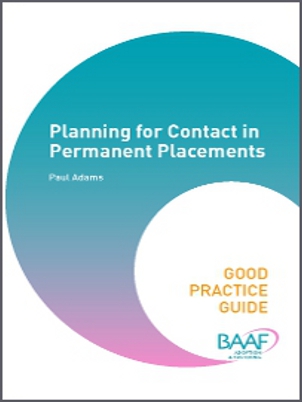
Planning for contact in permanent placements
£9.95
Planning contact in the context of permanence is a complex and challenging area for social workers, and there is anecdotal evidence to suggest that many struggle with this aspect of their work.
This Good Practice Guide is designed to assist social workers and managers in this difficult area. It aims to help practitioners to formulate well thought out contact plans; make informed decisions resulting in improved outcomes for children; present well-argued and reasoned justifications for the contact plans set out in written reports, including contact reports; and feel more confident in recommending particular contact plans and defending them when necessary.
Who is this book for?
The guide is aimed primarily at children’s social workers. However, it will also be of interest to adoption and fostering workers who need to ensure that when assessing and preparing permanent carers, they are doing so with a good understanding of what children in transition need.
What you will find in this book
The guide:
- sets out the history and context of contact
- considers the purpose of contact
- brings together the research evidence
- presents the legal context for each of the four countries of the UK
- looks at what should be considered when assessing and formulating a contact plan including kinship placements
It presents the issues in a way that is easily accessible to busy social workers and makes recommendations that are supported with case studies.
Read the contents page and introduction
Author
Paul Adams was the Foster Care Development Consultant for CoramBAAF.
NOW AVAILABLE AS AN EBOOK!
This title is now available in digital-only format for immediate access. Purchases are held in your own personalised online library and accessed via your browser or through the app on your phone or tablet.
£9.95
Reviews
A well-structured and clear layout to the book guides the practitioner through the areas which frame and inform practice and encourages throughout, a reflective stance which challenges the reader to question the traditional assumptions relating to contact including the purpose of contact, and to consider the uniqueness of each contact plan and the situation surrounding it. The real strength of the book, however, will be realised as practitioners gain the confidence to challenge the status quo in relation to contact producing well-thought-out plans that are clear of purpose, based on careful assessment, and are adapted to meet the ever changing needs of the child.’
Jane Bolan, social worker, Practice: Social Work in Action
The book is concise, with a clear layout and easy-to-read style. It will be of use to social work students whilst also being relevant and interesting to more experienced social workers. It is insightful and informative, and encourages the reader to reflect on their own practice and how they might approach and address the issues surrounding contact in planning.
Child & Family Social Work
